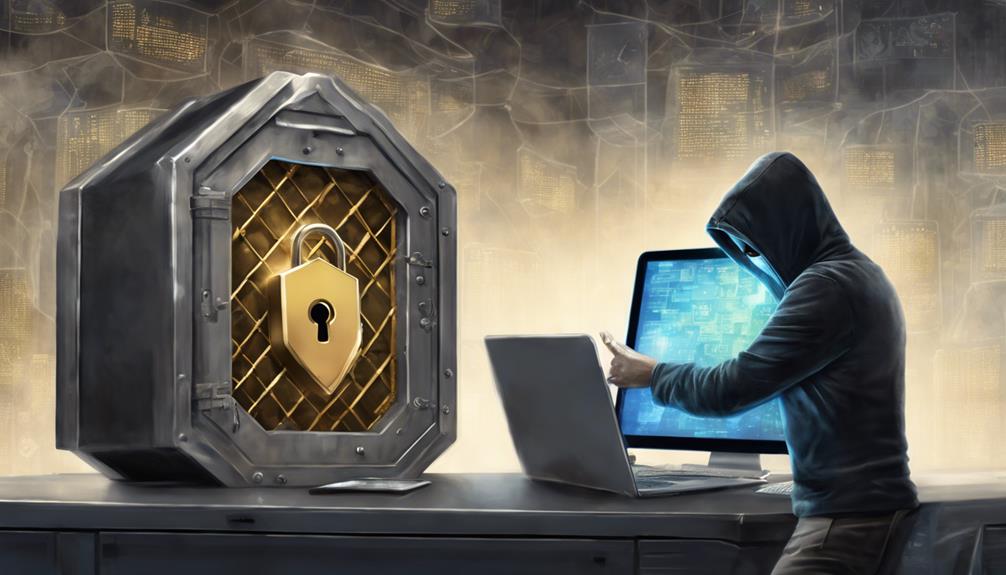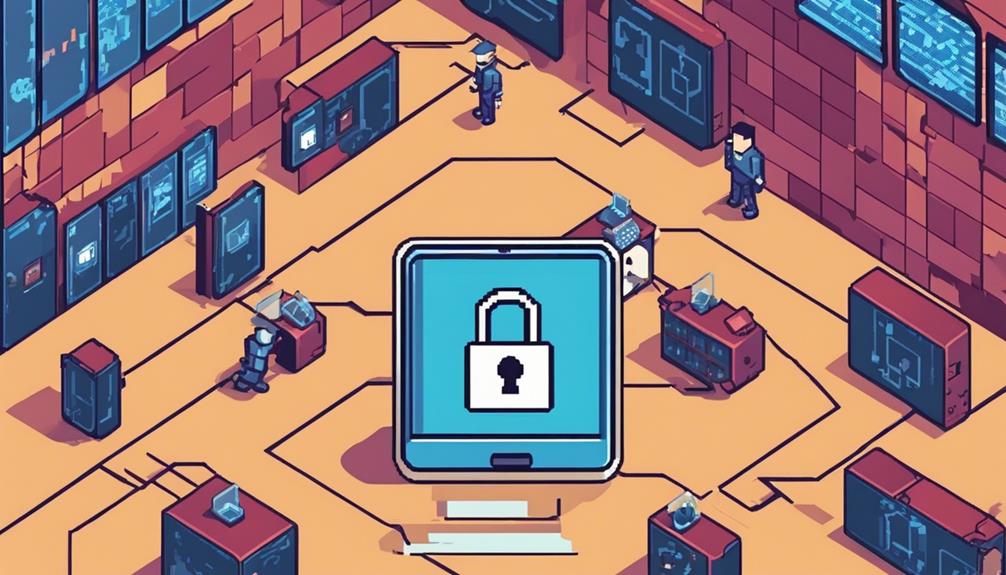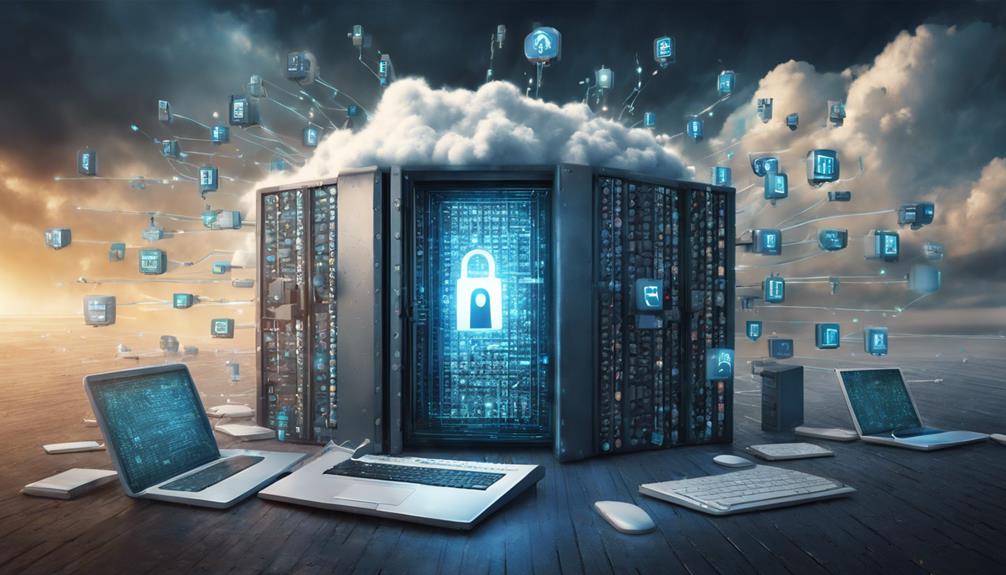Building an effective Incident Response Team (IRT) is essential for anticipating cyber threats. You’ll want to guarantee your team has defined roles and engages in regular training and drills. This way, everyone can respond quickly and cohesively during an incident. Establish clear communication channels to maintain transparency with stakeholders and adapt strategies based on lessons learned. As you develop your IRT, you’ll uncover more techniques to enhance your organization’s defenses in today’s threat landscape.
Key Takeaways
- Establish a dedicated Incident Response Team (IRT) to effectively mitigate damage and restore services during cyber incidents.
- Foster a culture of awareness through regular training and updates on cyber threats and risks.
- Clearly define roles and responsibilities within the IRT for improved coordination and faster response during incidents.
- Implement robust communication strategies to keep all stakeholders informed and aligned throughout the incident response process.
- Continuously evaluate and adapt response strategies based on post-incident analyses to remain prepared against evolving cyber threats.

When a cyber incident strikes, having an Incident Response Team (IRT) in place can make all the difference. You can’t afford to wait and see how things unfold when a threat emerges. Instead, you need a well-trained IRT that’s ready to spring into action. This team is your first line of defense, responsible for mitigating damage, restoring services, and preventing future attacks. Building an effective IRT requires careful planning and a focus on key elements, including threat detection and team coordination.
To start, you need to establish a culture of awareness and preparedness. Encourage your team to stay updated on the latest cyber threats. This means not just understanding the typical risks but also being aware of emerging threats that could impact your organization. Regular training sessions can help your team sharpen their skills in threat detection. You’ll want to simulate real-world scenarios that challenge their ability to identify, analyze, and respond to potential incidents. The more prepared they are, the more effective they’ll be when an actual incident occurs. Additionally, incorporating protective styling benefits can enhance your team’s readiness by fostering critical thinking and creativity in problem-solving during incidents.
Next, fostering strong team coordination is vital. An IRT isn’t just a group of individuals; it’s a cohesive unit that must work seamlessly together. Make sure everyone knows their roles and responsibilities in advance. During a cyber incident, chaos can reign if team members aren’t clear on who’s doing what. Regular drills can enhance coordination, allowing team members to practice their responses and refine their communication skills. The smoother the coordination, the quicker your team can mitigate threats and minimize damage.
Additionally, establish clear lines of communication within your IRT and with external stakeholders. You’ll want to maintain transparency about the incident with key executives and possibly customers, depending on the severity of the threat. This transparency fosters trust and ensures that everyone is on the same page.
Finally, regularly evaluate and refine your IRT processes. After every incident, conduct a post-mortem analysis to identify what worked and what didn’t. This reflection allows your team to learn from experiences and adapt their strategies accordingly. Anticipating cyber threats is an ongoing process, and your IRT must evolve to keep pace with the changing landscape.
Frequently Asked Questions
What Qualifications Should Team Members Have for Incident Response?
Team members should have relevant cybersecurity certifications, like CISSP or CEH, to establish their expertise. You’ll want individuals with strong incident handling skills, capable of evaluating and responding to threats efficiently. Look for experience in threat analysis, risk assessment, and forensic investigation, as these are vital for effective incident response. Communication skills are essential too, ensuring your team can collaborate well under pressure while keeping stakeholders informed during incidents.
How Often Should the Incident Response Plan Be Updated?
You should update your incident response plan at least annually, but don’t wait for a scheduled review if significant changes occur. Balancing the stability of your cybersecurity policies with the need for adaptability is essential. Regular employee training reinforces this dynamic, ensuring your team remains prepared for evolving threats. By staying proactive and responsive, you’ll enhance your organization’s resilience against cyber incidents, turning potential vulnerabilities into strengths through continuous improvement.
What Tools Are Essential for an Incident Response Team?
For an effective incident response team, you need essential tools like cybersecurity frameworks to guide your processes and best practices. You’ll also benefit from threat intelligence sources, which help you stay informed about current threats. Incorporating these tools enables you to quickly identify, respond to, and recover from incidents. Don’t forget to include communication platforms for collaboration and documentation tools to analyze and improve your response efforts continuously.
How Can We Measure the Effectiveness of Our Response Team?
You can measure your response team’s effectiveness by tracking incident response metrics like resolution time and the number of incidents resolved. Picture a well-oiled machine versus a rusty gear; your team’s training effectiveness directly impacts that smooth operation. Regularly assess your team’s performance during drills and real incidents, comparing their speed and accuracy against benchmarks. This juxtaposition reveals strengths and weaknesses, guiding focused training to sharpen your team’s skills for future threats.
What Role Does Communication Play During an Incident Response?
Communication plays a pivotal role during an incident response. It ensures a smooth information flow, allowing you to share critical updates quickly. By coordinating with stakeholders effectively, you can address concerns and make informed decisions. Clear communication minimizes confusion and helps everyone stay on the same page, which is essential for swift actions. When you keep lines of communication open, you strengthen the team’s ability to respond effectively to the incident.
Conclusion
Just like a well-tuned orchestra, your incident response team harmonizes to combat cyber threats. Each member plays their part, from the vigilant watcher to the swift responder, creating a symphony of security. When a cyber storm brews, the team doesn’t just react; they dance through chaos, turning potential disaster into a enthralling performance. So, gather your musicians, fine-tune their skills, and watch as they transform risks into melodies of resilience. Together, you’ll face any digital tempest that comes your way.









